
It used to be the case that the entry-level smartphone market was flooded with inferior products; devices that would never see a software update, that you couldn’t buy any accessories for, and that were generally just unpleasant to use. However, thanks to the efforts of a number of manufacturers like Huawei, ZTE, and even companies like LG and HTC, the bargain bin is no longer an appropriate term.
Entry-level smartphones in 2016 come with some decent specifications. You can’t expect the best of everything, but one thing remains stable these days, and that’s value for money. There’s a lot of competition in the entry-level space, and this means good results for consumers, with better devices competing for the elusive dollar.
Hardware becomes cheaper, and what was once the mid-range can now be found in entry-level devices at a third or a quarter of the price.
That’s where we find the ZTE Blade D (for Optus Pre-Paid) and the Chat 4G (for Coles Mobile). Both devices would’ve cost at least a couple of hundred dollars even a year or two ago, and today they’re well under $100, with specs that are actually quite usable.
Let’s take a closer look at these devices (which are, fundamentally, the same thing) and see what they’re like to use. For the purposes of this review, we’ll just use the one name — Blade D — unless there’s something different to remark upon.
- The display is a little disappointing
- While passable, the camera isn’t great
Design and Materials
Both variants of the Blade D are made from polymer plastic, but they do come in different colours — the Blade D is entirely white, and Coles’ Chat 4G is completely black.
Colour to one side, both devices comes with a 5” TFT display which provide 480 x 854 pixels. This isn’t a huge resolution, and the pixel density isn’t great (around 195), but for an entry-level smartphone, it’s more than adequate.
On the front of the Blade D is a 2MP front-facing camera, front-facing earpiece speaker, and the standard front-facing sensors to detect when the phone is against your head or in a pocket. ZTE’s trio of capacitive buttons are on the lower front, including a central home button, a back button to the left and a multitasking button to the right.
The ZTE Blade D has the usual MicroUSB charging port on the bottom, and a microphone just to the left. On the right hand side is the power/standby button and a volume rocker, with a 3.5mm headset/audio jack on top of the phones.
Looking at the rear of both devices and located on the right hand side corner is the 5MP rear facing camera with the single LED flash located right next to the main camera.
In the centre rear of both devices is the usual ZTE branding and in the right hand rear corner of both devices is the rear facing speakerphone, although there are little small dimples located on each side to ensure the devices aren’t completely flush against anything and muffle the sound too much.
Screen
As noted above, the 5” TFT displays on the ZTE Blade D variants isn’t all that great; the size is good, but the resolution is rather low. On top of this, the colours aren’t exactly vibrant, and the pixelation on fonts was especially pronounced. A 1mm bezel around the edge of the display also isn’t exactly brilliant, but it could be worse.
As with some other devices I’ve reviewed lately, the ZTE Blade D variants do attract quite a number of fingerprints on their displays, and this is because there doesn’t appear to be an oleophobic coating applied which we normally see on more expensive / higher end devices. A screen protector might have helped this somewhat, but unlike more mid-range devices, ZTE’s entry-level phones don’t come with a screen protector in the box.
The good thing with fingerprints is that they’re easily wiped off, so really it’s not a big deal.
Battery life
With a 2,200 mAh Li-Ion battery, our expectations were not overly high, but equally, the Blade D variants are somewhat lesser consumers of power than more powerful smartphones. This combined means that with reasonable usage, both phones would last the full day with anywhere between 20% to 40% in the tank.
However, everyone’s usage is different, and if you use these devices heavily, you may find that a mid-afternoon charge is in order. If you’re like most people, you’ll have opportunities to do this around you — at your desk at work, in the car on the way home, or with a charger stashed near the couch.
All day battery is great, but when it doesn’t quite work, there’s always an easy way around it.
Camera
The Blade D variants come with a 5MP rear facing camera. This isn’t an especially high resolution, but it’s enough to take reasonable photos to share with your friends and family, to use on social media and the like. While you probably wouldn’t want to use this resolution for printing photos, it’s perfectly capable for just about everything else.
At first, the shutter lag was a little noticeable, and focus isn’t especially quick, however once you get used to it, it’s more than acceptable for a phone that’s under $80.
Looking at picture quality, while at first they might seem to be ok, colours do seem to be a little washed out and there is a fair bit of noise. This is probably to be expected, given the lower quality camera sensor being used. That said, as noted above, pictures taken on either device pass the social media test when uploaded and shared with friends on Facebook, Twitter, etc.
The 2MP front facing camera can take reasonable selfies, though they do tend to look a little grainy at best. Also, lighting can be an issue so it is best advised should you wish to take selfies with either device, to be in a well lit room or get someone to take a photo using the rear camera.
Despite the entry-level status, there are also settings within the camera to allow for you to manually select from the following camera modes: Auto, sport, panorama, sunset, night, candlelight, backlight, beach, snow (which let’s be honest, may not be used much here), HDR, landscape and portrait modes.
There are also filter settings should you wish to manually select from one of the pre-installed filters within the camera and upload them straight to your social media pages or share them via MMS, email, etc.
Connectivity
Connectivity wise, both the Blade D and the Chat 4G come with the standard Bluetooth version 4.0 which enabled strong connection to my Android Wear Watch, Chromecast and Bluetooth speakers.
Both devices also come with the usual WiFi specifications such as WiFi 802.11 b/g/n and the connection for both devices was quite strong when connected to my home WiFi network.
Network Connectivity wise, both the Blade D and the Chat 4G utilise and are locked to the Optus Network and also take advantage of the network’s 4GPlus spectrum. Below is the network connectivity spectrums for both devices:
- 2G: 900, 1800 MHz
- 3G: 900, 2100 MHz
- 4G: Band 3, Band 7, Band 28
Both devices come with GPS (supplemented with A-GPS), and it works just as it should.
Sadly, though, NFC is not included, so if you’re looking for a cheap smartphone to use with your bank’s tap-and-pay app, or if you’re anticipating the release of Android Pay for Australia, you might need to look at a different phone.
Sound
Sound wise, there isn’t really much to talk about here, given the rear facing speakers aren’t all that powerful and sound can seem muffled. At full volume when listening to music, clarity can also be lost. This is where I do believe front facing speakers can be far superior but again budget is a factor when it comes to these kind of devices.
Also it is unsure whether HD Voice is active on both devices, as I really didn’t notice this feature being active; it most likely isn’t available.
Performance
Probably the area where most entry-level devices suffer is in performance stakes, and while the ZTE Blade D variants can handle the benchmark tests we’ve applied, it shouldn’t come as any surprise that the benchmarks simply aren’t very good. We’ve long said, though, that benchmarking really doesn’t mean an awful lot in terms of real-world usage, and equally, a $80 device simply shouldn’t be expected to work as quickly or as well as a phone costing more than 15 times as much.
For the use-case for these devices — phone calls, messaging, emails, some social media and taking some photos about the place — there’s really not too much to complain about. In fact, really the only area where the lesser performance really does show is when gaming. When intensive processing or graphical manipulation is needed, the ZTE Blade D can start to slow down.
For less intensive games though, like Angry Birds, Family Guy: the Quest or Simpsons Tapped Out, the performance was perfectly adequate, though the TFT display made more graphic-intensive games a little harder to play.
Software
Both the Blade D variants are loaded with Android 5.1.1 (Lollipop) installed on each device. ZTE, as with most of its other devices, runs a vanilla version of Android Lollipop on the Blade D range, which is a good thing and certainly should be something we would like to see more with some other manufacturers.
That said, ZTE have also given the Blade D it’s own little touch of MiiFlavor which is, like previous devices we have reviewed from ZTE (like the Optus/ZTE 4G Smart device) only ensures the apps on the phone look like it has the MiiFlavor skin without actually having the full skin placed onto the device. It would seem though, that the Chat 4G has missed this small (and not really required) addition.
While both devices are unlikely to receive anything much by way of software updates, security updates may well be issued for more serious issues. Historically, at least, entry-level devices tend to stay on the software version they’re released with, so if you’re expecting significant updates to Android 5.1.1 on here, you’re better off looking elsewhere.
ZTE Blade D / Chat 4G
- 5” TFT (480 x 854) display
- Qualcomm Quad Core 1.1GHz A7, with Adreno 304 GPU
- 900MB RAM
- 8GB ROM with approx 4GB user space plus expandable external memory using microSD card up to 32GB
- 5MP Rear, 2MP front facing
- WiFi 802.11 b/g/n, Bluetooth 4.0
- Radios:
- 2G: 900, 1800 MHz
- 3G: 900, 2100 MHz
- 4G: Band 3, Band 7, Band 28
- 2200 mAh Li-ion, user-replaceable
- Android 5.1.1 (Lollipop)
If you’re looking for a cheap way to get into a smartphone, without shelling out hundreds of dollars for functionality or power you don’t need, the ZTE Blade D variants are a good way to get into Android. Sure, they have their flaws — lower screen resolution, less capable camera — but they also are surprisingly good for devices costing less than $100 (and quite a bit less).
There are, of course, other choices out there, and if you can afford to spend $200 or $300 on a smartphone, you probably should — ZTE’s Blade V6 is a great phone for that price, and there’s likely to be an updated version in the next few months..
This isn’t to say the entry-level devices, like the Blade D, aren’t worth buying — but at this end of the market, price is a very limiting factor: the less you pay, the less do you get, and sometimes you’re better off spending a bit more.
The Blade D is available from Optus stores for $69 whilst the Chat 4G is available from Coles supermarkets for $79 and both are locked to the Optus Network and a fee will apply if you wish to network unlock both these devices. You would need to contact Optus or Coles Mobile to find out about the unlocking fee costs.


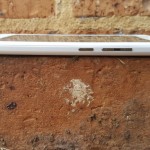

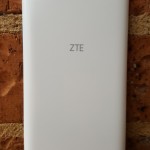
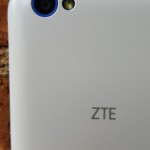
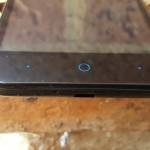
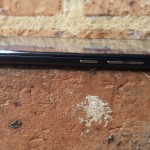
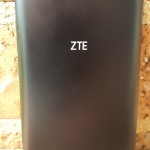












Please tell me if it has hotspot, I REALLY NEED TO KNOW. thanks XD
Hi James, while we no longer have the review unit I would be very surprised to find it didn’t as it’s an Android feature.
Can you help me out I’ve been trying to find some one who can help me to fix my mobile as I can’t hear incoming calls from my cell and it’s driving me crazy
Optus said they’d unlock the phone without a charge ‘after it had been connected to their network & recharged for 6 consecutive months, otherwise it would be an $80 charge to unlock it straight away! I ended up purchasing an unlock code via ebay for $3 (& am now happily using it on the Boost Mobile Network). For a $49 phone (1/2 price last week from Woolworths) you can’t go wrong- I am very impressed with the Blade D’s quality & usability. I would most definitely recommend this phone to others… Oh, and by the way; ‘Pokemon Go’ works on… Read more »
how you get unlock code from ebay
Put ‘ZTE Blade D unlock code’ into a search. Click ‘buy it now’ [once you find a seller selling the relevant unlock code] then provide the seller with the details specific to your phone ~for eg, your current carrier, IMEI number, phone model (some sellers cover several models at a time- so you may have to specify your phone model) while at the checkout (usually in the space where it says, buyer can add a note for the seller). The seller will then generate your unlock code, and send/ message it through to you (ebay/ email message’s) usually within 24… Read more »
please can you help me get zte blade d firmware, pls i wont mind paying for it, my own stuck pllzzzzz
Good review. Just wondering where I can find accessories for this phone? Have been searching for quite some time for a wallet or case…
There are plenty of phone cases (including wallet cases, screen protectors, and gorilla glass) for this model of phone on ebay.
No more selfies please.
lol
Hi , O was able to unlock like you did but the connectivity to the network on Aldi Sim is virtually non existant, one bar at most or none at all
Try a Boost sim instead (has similar connectivity to Telstra -but without the high cost).